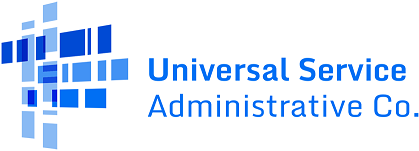Step 1: Determine Eligibility of Your Site
You are eligible to receive funding from the Healthcare Connect Fund (HCF) Program if your health care site meets all of the following criteria.
Your site:
- Must be a public or nonprofit entity
- Must be one of the following types of facilities:
- A post-secondary educational institution offering healthcare instruction, such as teaching hospitals or medical schools,
- A community health center or health center providing healthcare to migrants,
- A local health department or agency,
- A community mental health center,
- A not-for-profit hospital,
- A rural health clinic,
- A dedicated emergency room of a rural for-profit hospital
- A skilled nursing facility (SNF), or
- A consortium of health care providers (HCPs) that includes at least one of the facilities mentioned in (a) through (h).
- Must be in a rural location as defined by the FCC. If your site is not located in a rural area, it still may be eligible to apply to the HCF program as part of a consortium (see below).
Off-Site Data Centers and Administrative Offices
Broadband connections to off-site data centers and administrative offices that your facility uses for healthcare purposes are eligible for funding. Specifically, subject to the conditions and restrictions set forth below, we provide support for connections used by eligible HCPs: (i) between eligible HCP sites and off-site data centers or off-site administrative offices, (ii) between two off-site data centers, (iii) between two off-site administrative offices, (iv) between an off-site data center and the public Internet or another network, and (v) between an off-site administrative office and an off-site data center or the public Internet or another network.
Apply as Part of a Consortium (or Group)
A consortium is a group of health care sites that apply as one entity. Each consortium has one consortium leader who files the required forms on behalf of everyone in the group.
Each facility in the consortium must meet the first two eligibility criteria, i.e., be public or non-profit and one of the eligible facility types. Both rural and non-rural health care facilities can receive funding as members of a consortium as long as more than 50% of the consortium’s members are rural sites.
Once you apply as a consortium, you can find your consortium’s rurality percentage when you log in to My Portal, the RHC program’s online application filing system.
For more information about forming and applying as a consortium, click here.
Note: The FCC considers each health care site or location as an individual health care site for purposes of calculating support under the RHC program. Therefore, each site must demonstrate that, by itself, it is an eligible entity.
Submit FCC Form 460
Individual Site
If your site meets the criteria above, you are ready to submit the FCC Form 460 (Eligibility and Registration Form). You can submit this form at any time during the year, and you only need to submit it one time, unless your information changes. If any of your information does change, such as your site’s physical location or entity type, you must submit a revised FCC Form 460 within 30 days of the change.
If you are using a consultant, submit a signed third party authorization (TPA) letter with your FCC Form 460.
Consortia
If you are applying as a member of a consortium, you must also submit an FCC Form 460. The difference with consortia is that the consortium leader can file on behalf of all the member sites once they have received a Letter Of Agency (LOA) or Letter of Exemption (LOE) for each site. Please download the LOA/LOE User guide for more information.
Once the LOAs or LOEs are approved, the consortium leader can file forms on behalf of all the consortium member sites.
The material on these webpages is provided for general information only and should not be relied upon or used as the sole basis for making decisions without consulting the RHC program rules, orders, and other primary sources of information. Applicants and service providers are ultimately responsible for knowing and complying with all RHC program rules and procedures.
